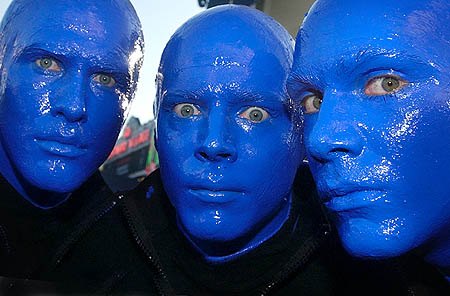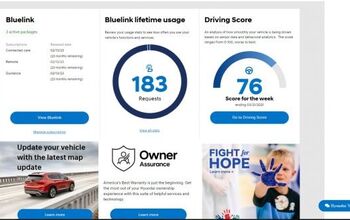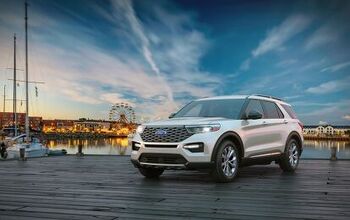Hyundai Turns Blue

Volkswagen’s range of BlueMotion cars are their flagship “Look at us! We’re bluegreen!” vehicles. They employ techniques like a remapped engine, longer gear ratios and better aerodynamics to wring the last bit of mpg out of an ICU. The Blue Oval of Ford has the EcoBoost systems which are engines with a turbocharger or direct injection. That’s said to give power and torque on par with larger engine sizes, resulting in better fuel consumption and lower emissions. Daimler has its Bluetec, a slightly disgusting technology that requires overpriced urea to be added to your Benz – urea, as the name indicates, originally was a by-product of urine. (Now why didn’t the hyperkilometering AutoBild think of THAT?) Anyway, Hyundai wants in on the act.
Car Pages reports that Hyundai has four new vehicles in, what they call, the “Blue Drive” range. The vehicles adopting this will be the Hyundai i10 blue, the i20 blue, the i30 blue and the ix35 (you guessed it) blue. In addition to Volkswagen’s better aerodynamics, gear optimization, and rolling resistance tires schtick, Hyundai will also employ technologies like Stop and Go systems and a more efficient alternator to maximize the amount of energy generated during braking. They even resurrected the old spec racer’s trick of disconnecting the alternator when not needed. Gains you 2 to 5 hp right there. The engine will use a low friction oil to reduce wear and tear. What’s also unusual is that Hyundai won’t just be using diesel engines for their blue range: a small 1.0l petrol engine will also be available, increasing the chance that these blue cars will go to the land of red, white and …
The end result of all of this work by Hyundai engineers is to meet the EU mandate of lower CO2 emissions. The i10 (about the size of a Toyota Aygo or Ford KA) will emit 99gm/km, which will make it exempt from car tax in the UK. Curiously, the i20 blue (the size of a Ford Fiesta or Honda Jazz) will emit less than the i10 blue at 98gm/km. The i30 blue (the size of a Toyota Corolla or Ford Focus) will emit 98gm/km for the hatchback and 99gm/km for the estate version. The most impressive of them all will be the ix35 (which is a C-segment SUV model) which will produce 135gm/km, better than some C-segment hatchbacks.
Hyundai’s blue cars are slated for production at the end of 2010/beginning of 2011. Now, for the most pressing question: What’s with the worldwide infatuation with blue? GreenMotion, GreenTec and Green Drive probably would have been too obvious, I guess.

More by Cammy Corrigan
Latest Car Reviews
Read moreLatest Product Reviews
Read moreRecent Comments
- Ravenuer I see lots of Nissans where I live, Long Island, NY. Mostly suvs.
- ClipTheApex The latest iteration of the CRV is very handsome. Both CUVs have their mechanical and suspension challenges but in looking at interior & exterior design, I believe the CRV is much more tasteful. RAV4 seems a bit overwrought with way too many creases and bulges-- delivering a cohesive look. Just my opinion.
- Jbltg The more time passes, the more BMW's resemble Honda. zzzz
- VoGhost Doubling down on the sector that is shrinking (ICE). Typical Nissan.
- Dwford I don't think price is the real issue. Plenty of people buy $40-50k gas vehicles every year. It's the functionality. People are worried about range and the ability to easily and quickly recharge. Also, if you want to buy an EV these days, you are mostly limited to midsize 5 passenger crossovers. How about some body style variety??


































Comments
Join the conversation
Only some of the MB Bluetec diesels use the urea, mainly the bigger SUVs. The smaller passenger cars generally don't; they use a de-nox catalyst.
Blue is the new Green: Environmental respect, only with fiscal common sense instead of Al Gore fashion accessories. It's a step in the right direction, if a very small one.